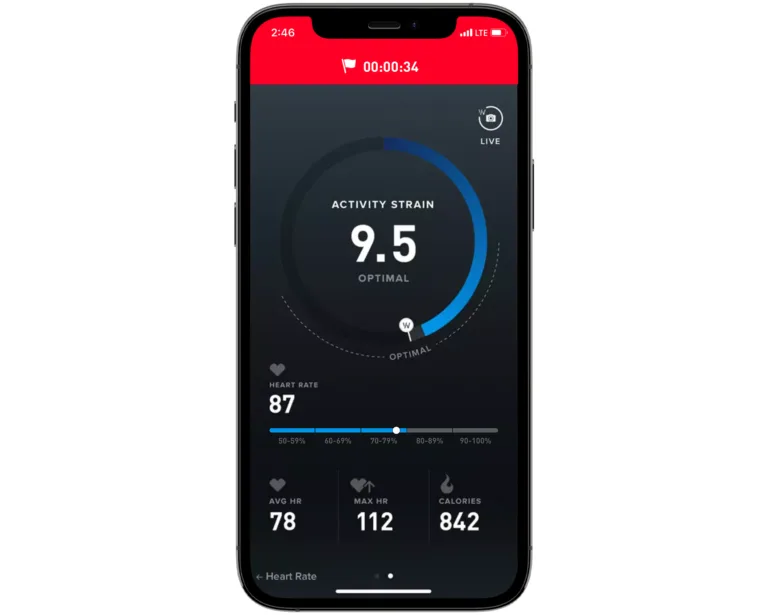Topics
- Article
- Health & Wellness
- Training & Exercise
Aerobic Exercise: Examples, Benefits and Tips

There are many ways to work aerobic exercise into your day. Learn about the types of aerobic workouts you can do at home, outside and at the gym.
Regular aerobic activity helps you live longer and healthier. Aerobic exercise - aka cardio - refers to activities performed in a specific heart rate zone. Below we’ll define aerobic exercise, discuss its benefits, provide tips for creating an aerobic training plan, and give you some examples for aerobic workouts you can do at the gym, on the road, or at home.
What is Aerobic Exercise?
Aerobic means “with oxygen” and aerobic workouts are any form of activity that uses your aerobic metabolism. During aerobic activity, your body metabolizes both fat and carbohydrates (also called glycogen) for energy. In other exercise zones your body may metabolize only fat or only carbs, but during aerobic training you burn both. When you perform any aerobic activity your respiratory rate increases from about 15 breaths per minute for an average adult at rest to between 40 and 60 breaths. Your heart rate also increases to between 70% and 80% of your maximum heart rate.
Aerobic exercise is performed between 70 and 80% of your maximum heart rate.
Aerobic exercises take advantage of those high heart and respiratory rates by allowing you to move faster, work harder, and get a higher-intensity workout in a shorter amount of time than activities in lower heart rate zones. But they’re not as intense (or as short) as anaerobic activity. What Does Maximum Heart Rate Mean? Max heart rate is the greatest number of beats per minute (bpm) that your heart can reach when you’re going all-out. It varies from person to person, but it generally changes with age and fitness level. Read More: Understanding Max Heart Rate
Aerobic vs Anaerobic Exercise
Your exercise heart rate zone varies depending on the type of workout you’re doing. Running generally takes place in the aerobic heart rate zone, but speed intervals are in the anaerobic zone. Anaerobic workouts are performed at 80% to 90% of your max heart rate in the anaerobic zone. In this zone your body can’t get enough oxygen to fuel its muscles, so it turns to the glucose found in carbs. Anaerobic training is more intense but much shorter in duration than your average aerobic activity. Both types of exercise are valuable parts to your overall training plans. WHOOP shows you which heart rate zone you’re working in, so you can optimize your training session and better meet your goals.
Examples of Aerobic Exercises
Aerobic exercise has evolved since the spandex-laden aerobics videos of the 80s. One of the best parts of cardio activities is that they can be done almost anywhere, with or without equipment. The American Heart Association recommends that adults perform a minimum of 30 minutes of aerobic activity 5-7 days per week. If 30 minutes is impossible (parents with young children might have trouble getting a half an hour alone), try breaking it up into 10-minute periods. Here are some examples of aerobic workouts you can do at home, outside, and at the gym.
At Home

Squats can be combined with other activities to create an aerobic body weight routine.
Body-weight workouts are easy to do at home because they usually don't require equipment. Activities including planks, dips, crunches, step-ups, pushups, jump squats, and jogging in place can be combined into a circuit training session of 30-40 minutes with short rests between circuits. It may come as a surprise to you, but lifting weights can also be aerobic. Cardio weight training may burn more fat in less time than other activities. Use a set of dumbbells heavy enough so you can do 10 to 12 repetitions of upper body exercise. The activities noted above can be completed with or without weights.
Outside

Running and walking are among the numerous aerobic activities you can do outside.
Obviously, running, walking, cycling, roller blading, and swimming laps are aerobic workouts, but you can also go hiking or rucking in a natural setting. Ice skating, rowing, or kayaking on a lake or river are aerobic exercise, as are sports like basketball, hockey, soccer, volleyball, and tennis.
At the Gym

Spin classes and stationary bikes provide an aerobic workout at the gym.
If you’re more of the gym-type, stair machines, ellipticals, stationary bikes, and treadmills might be your vibe. There are also plenty of classes that focus on aerobic workouts, including spin, Zumba, water aerobics, and yoga. You can also hit the weight machine circuit and do light weights and up your reps and sets. Kickboxing, boxing, and dance classes are also great cardio activities.
Benefits of Aerobic Training
Cardio offers several health benefits such as:
Improves cardiovascular health. Aerobic activity strengthens your heart and helps it become more efficient at pumping blood throughout your body. Performing moderate to vigorous-intensity aerobic workouts 3 to 4 times a week can help reduce the risk of heart disease, lower blood pressure, raise “good” HDL cholesterol, and lower “bad” LDL cholesterol.
Managing weight. Combined with a healthy diet, aerobic training helps you burn calories and lose weight or maintain your weight (if that’s your goal).
Sleep better. A regular exercise program combined with sleep hygiene practices can help you sleep better at night. Moderate aerobic activity increases the amount of deep sleep you get, but be aware of how late you work out. Aerobic training causes the body to release chemicals that may keep you awake. Plan your workout to end at least a couple of hours before going to bed to help the endorphin levels even out.
Managing chronic conditions and pain. Low-impact cardio can help reduce and manage chronic back pain and arthritis. It may also help control blood sugar in people with type 2 diabetes and coronary artery disease, according to this study.
Strengthens immune system. Regular physical activity plays a role in keeping you healthy and preventing illness, including respiratory illnesses like COVID-19. Numerous studies have found that working out at a moderate to vigorous intensity for 60 minutes or less optimizes the immune boosting benefits of exercise. However, intense and prolonged workouts can suppress your immune system.
Boosts mood and supports mental health. Working out causes your body to release endorphins, the chemicals that reduce your perception of pain, and create positive feelings. You may notice you feel “euphoric” or at least satisfied after completing a run. That “runner’s high” is often accompanied by a positive outlook and energized feeling. Aerobic exercise has been found to be related to lower anxiety and depression symptoms.
Improves balance and mobility. Regular aerobic activity will help you maintain mobility, balance, and flexibility as you grow older, reducing the risk of falls and injuries from falls in older adults.
Tips to Create an Aerobic Exercise Plan
Set goals. Whether you’ve been running for years or are just getting started, you want to have a goal in mind. It might be to lose 20 pounds, prepare for a marathon, or lower your 10k time by 5 minutes. Goals help you gauge your progress, stay motivated, and celebrate small wins.
Create a balanced routine. If you’re just starting out, don’t go overboard with 300 minutes of exercise each week. Work up to 300 minutes if that’s your goal, but start with 30 minutes a day, as mentioned above. Spread your workouts throughout the week, and don’t sweat it if you miss one. Do a combination of moderate and vigorous activities, like walking and running or a leisurely bike ride and spinning.
Mix it up. Add different activities to keep boredom at bay. Cross-training options like cycling or bodyweight workouts can add interest to your walk-run schedule. Strength training twice a week will make sure you’re working all your major muscle groups.
Build activity into your daily routine. Being stuck in an office (whether at home or in the workplace) is a fine excuse to get up and take a walk to the coffee machine. Extend that walk to a stroll around the office, up and down your apartment building stairs, or around the block. Plan to watch your favorite TV show while on the treadmill or stationary bike.
Monitoring your Heart Rate Zone with WHOOP
WHOOP measures your heart rate and quantifies the strain your body takes on each day. Each morning, our recovery metric tells you how prepared your body is to take on strain that day, using heart rate variability, respiratory rate, sleep, and resting heart rate. When you track your workouts with the app’s Strain Target, you can see which heart rate zone you’re training at in real time. You’ll know if you need to turn up the effort or hold back to get into your aerobic heart rate zone.
